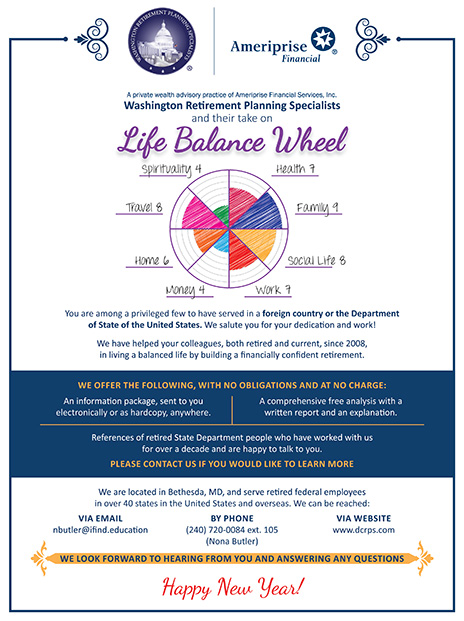Can Diplomacy Be Done Virtually?
Two Foreign Service officers explore the question through the lens of personal experience. Their answer: in some ways yes, but mostly no.
BY JESSICA HUARACAYO AND ALEXIS LUDWIG
If you reacted like most of us, the news early last year of a novel coronavirus in Wuhan, China, sounded a bit like another SARS or bird flu event at first—a problem far away that would probably be successfully contained or else fizzle out before threatening us all in earnest. Then came Italy, Spain, Iran, the cruise ship crisis, the Seattle nursing home and all the rest. Whether COVID-19 was more gray swan than black, an event that public health experts knew could come and that we should have been better prepared to confront when it did, we soon found ourselves enmeshed in a new and unexpected reality: obliged to observe social distancing; unable to go to the office or almost anywhere else; required to work from home.
By late March 2020, the State Department, like the rest of the federal government and most missions abroad, had gone to mandatory telework for the majority of employees. By the time you read this, many colleagues will have reached the one-year mark of partial or continuous telework, and there’s no clear end in sight. Given that there has not been a wholesale collapse of diplomacy, some are entertaining the idea that perhaps this is the new normal, that we don’t need to send diplomats and their families all over the world, that we don’t need to maintain diplomatic facilities in almost every country—that diplomacy can and should be done online.
In the following, we take a hard look at that proposition through the lens of our own experience. Although some diplomatic work can certainly be conducted virtually, we find that the core elements of diplomacy absolutely require in-person engagement, and that whatever our current technological capabilities or future advances, we’ll never really be able to rely on long-distance or virtual diplomacy. Building relationships of trust—the coin of the diplomatic realm—depends on actual human contact.
Getting Things Done
Are we able to get our diplomatic work done in the midst of a pandemic that has radically altered the conduct of daily life? At an initial level of analysis, the answer must be: “Yes, we are.” Following the move to virtual work, internal bureau and office meetings in the State Department were conducted on the Cisco Webex or the Microsoft Teams platforms. The transition was not quite seamless, but almost. Those colleagues who had to go into the office in person to access the classified systems, attend a meeting or for whatever other essential reason, have mostly done so on a case-by-case basis, as needed. A scattered few have come to the office by choice, finding it easier to focus on their work in a physical space and location that does not double as home.
Broadly speaking, our internal work has continued apace, though with the added and now familiar challenges of managing from afar, juggling telework with unexpected parenting tasks and maintaining team cohesion. Certain advantages of working virtually, like the time saved by no longer having to commute to and from Washington, D.C., or the embassy or consulate every day, are hard to deny. Without a doubt, effective new technology platforms that enable virtual meetings and engagements have helped keep our diplomatic activities going, preventing the kind of collapse into paralysis that might have occurred had we confronted a similar challenge even a decade ago.
Our outward-facing work has continued, too, at least those aspects that were already well established with a defined structure and schedule. At the U.S. Mission to the Organization of American States, we used WhatsApp, Zoom and Webex for most informal coordination with other member-state missions and OAS entities, and found we were able to get a lot done in that way. Even Kudo, the somewhat unwieldy virtual platform that the OAS itself used for official engagements requiring simultaneous interpretation in more than one language, seemed to work well after the early kinks were ironed out.
Importantly, however, most of us had interacted together in countless in-person discussions and meetings prior to the onset of the pandemic, and so we knew one another well. Because we had that built-in familiarity and trust, the transition to virtual coordination took place relatively smoothly and, in fact, with almost surprising ease.
Getting Off the Ground … and Across the Finish Line
That fact turns out to be one of the rubs of virtual diplomacy: Drawing from previously established personal networks is much easier than trying to start from scratch. One foreign diplomat in Washington says he feels lucky to have arrived more than a year before the pandemic started because he was able to use the network of personal contacts and relationships he had built up before the curtain fell on in-person diplomacy; as a result, he says, he has taken the crisis in stride and gotten some good work done.
Another D.C.-based diplomat (an equally engaging and personable chap, we must add) has a different story that makes the same point. Because he arrived with his family in Washington just before the pandemic broke, he has had a hard time simply getting off the blocks. Ten months later, frustrated by having to be at home, unable to pound the pavement to build his personal and professional network, mostly doing meetings by Zoom, he acknowledges: “I know ‘so and so’ at that agency, embassy or institution, but not much more. I may have some contacts, but I have no real relationships and certainly no new friendships.”
Breaking through an impasse or bringing an issue to closure is equally difficult to do from a distance. At the OAS, the previously scheduled March 20, 2020, Special General Assembly to elect the next secretary general is a case in point. There was no pre-certified mechanism to conduct such a formal vote by virtual means, so we knew it needed to be done in person before it was too late. To preempt a move by several member states to use the pandemic as a pretext to paralyze the OAS by blocking the vote, the United States worked with key partners to push through the pockets of resistance to carry out this one final “in-person” meeting in accordance with health and safety standards then in place.
Importantly, that “in-person” General Assembly ensured the organization’s ability to continue its work by virtual means ever since. Indeed, it helped kick off a series of intensive coordination meetings, all conducted virtually, that ultimately led to a consensus agreement to hold official OAS meetings and even the next annual General Assembly in a virtual setting. Not coincidentally, most of these meetings focused on the priority importance of forging a regionwide response to the pandemic. In the absence of that decisive in-person assembly, however, the organization and its member states might well have languished in pandemic paralysis for a good while.
Challenges and Adjustments Overseas
Overseas challenges have differed significantly according to position and role. Consular officers’ visa adjudications and routine U.S. citizen services requiring in-person engagement largely halted. This activity was supplanted, during those dramatic early weeks, by the extraordinary emergency effort to repatriate tens of thousands of U.S. citizens and issue emergency visas to travelers with humanitarian needs or to those assisting the U.S. fight against COVID-19. Management officers and specialists acquired new expertise in local labor laws, supply chain logistics and COVID-19 testing protocols.
Office managers and IT professionals masterfully shepherded the transition to new online platforms for entire sections. Public diplomacy officers moved almost exclusively online, sparking remarkable innovation but losing the irreplaceable power and impact of in-person exchange programs, classroom engagements and public events. Regional security officers identified risks specific to posts under lockdown, established new protocols and found innovative ways to compensate for crisis management exercises with host-nation counterparts canceled due to the pandemic. But no matter what our cone, functional specialization or agency, COVID-19 and virtual work pose the same challenge to that most basic diplomatic task: maintaining and deepening relationships with trusted contacts.
Our Foreign Service colleagues abroad are generally in the same boat as foreign diplomats in Washington, D.C. Those of us who were already in place when the pandemic hit have had an easier adjustment, transitioning from in-person coffees and lunches with established contacts to informal WhatsApp exchanges or phone calls. Depending on the country, we have been able to resume one-on-one coffee meetings, outdoors and with appropriate precautions. Even so, some colleagues find that communicating in a second language through a mask can be frustrating—reading the expressions of covered faces is next to impossible, it turns out—and prefer to meet with contacts over videoconference, despite the stilted feeling of such meetings and the onset of Zoom fatigue.
At the same time, those colleagues who arrived overseas during the pandemic are at an immense disadvantage for building the critical relationships that inform all good diplomacy. For them, the already steep learning curve for newly arrived personnel became even steeper. One new officer struggled for several weeks before she was finally able to engage with any external contacts. Not surprisingly, she found that actual, in-person meetings were the best way—and sometimes the only way—to get things started and ensure that she subsequently received replies from interlocutors to her email inquiries.
Déjà Vu All Over Again?
Many of the questions about virtual diplomacy today feel familiar because they are familiar. They’re a variation on the same theme that crops up each time a newfangled technology arises and threatens, or promises, to eliminate the need for real live diplomats to do the work of diplomacy. Whether it be due to WorldNet, the fax machine, email, social media or now Zoom and Microsoft Teams, diplomats always seem to be on the brink of being declared obsolete. Who needs ’em when you’ve got X, Y or Z capability? Well, not so fast.
Technological advances are often useful and mostly good; they can play a valuable supporting role. But no technology platform or other mere mediating mechanism is a substitute for actual physical presence for in-person, face-to-face, human-to-human engagement. Critically, getting things, first, off the ground and, second, across the finish line are impossible in the absence of in-person engagement. To paraphrase Edward R. Murrow, only actual human beings can bridge those “final three feet.”
Examples illustrating the benefits of in-person contact abound. The same D.C.-based foreign diplomat who said things were going fine for him virtually, for example, acknowledges that his government would never have been invited to participate in an important weekly phone call with other key countries had he not been there in person at a pre-pandemic meeting and hit it off with the American organizer.
For a U.S. political or economic officer abroad, the humble démarche—at once the most routine and potentially consequential of our activities—offers a case in point. In Spain, COVID-19 restrictions were so severe that for months we delivered démarches exclusively by phone or email. The Spanish ministry of foreign affairs’ response was invariably a noncommittal: “Thank you, duly noted.” On the rare occasions when our instructions mandated in-person delivery, our counterparts obliged. We relished the opportunity to meet in person, be masked and socially distanced, to catch up, exchange insights, and reconnect as fellow humans experiencing this odd new reality together.
It was during those in-person conversations that we received information of real diplomatic value. Only in face-to-face (or mask-to-mask) situations would our contacts feel comfortable conveying their more nuanced assessments of, say, the barriers to signing onto our initiative, or explaining the ways in which they were quietly pushing forward our common agenda, or asking us to provide some additional context after a worrisome tweet.
No Substitute for Being There
One crucial element of person-to-person engagement simply cannot be replicated in the virtual environment. Though that sounds self-evident, it is difficult to articulate what this element is. Much of this goes back to the core of diplomacy being about cultivating relationships of trust; as former Secretary of State George Shultz suggested in the pages of the November FSJ, trust underlies and informs everything of value that we do. It is difficult if not impossible to “tend the garden” and concoct such an intangible substance as trust from afar.
It has something to do with what psychologists call collision: the spontaneous, unpredictable and often creative chemical combustion that occurs when people gather together for some shared purpose. We really cannot know what we are missing by not “being there” in person: the chance encounters and unscripted opportunities that bring new information or insight; the conversations over coffee that take an unexpectedly productive turn; the relationships or even friendships that might be born, developed and deepened.
The more narrowly intentional virtual realm effectively forecloses such ad hoc, random or unplanned opportunities. It is impossible to “run into” someone else on Zoom or MS Teams; and even informal Zoom conversations suffer from the formality of scheduling them, their “planned spontaneity” often collapsing of its own contradictory weight. The longer-term cumulative consequences of these countless unknown missed opportunities—including, for another type of example, in the case of International Visitor Leadership Program participants who never made the trip to the United States—are essentially incalculable.
Virtual diplomacy is also fraught. Imagine daring to share a “candid” professional confidence in the perpetually monitored panopticon of your typical virtual platform. Think Wikileaks without the need for leaks. Speaking of Wikileaks, the absence of “in-person” engagement poses a weirdly parallel challenge to the foundation of trust on which diplomats rely, even if it’s more passive neglect than explicit breach in nature.
In the end, reliance on virtual diplomacy will lead to the dilution and erosion of the benefits of diplomacy altogether. Unable to “tend the garden” in person, the quality of our relationships suffers. As our relationships suffer, so does the quality of our understanding, information and appreciation of the complicated context, the subterranean dynamic or the thorny issue. Our value-added for Washington policymakers follows suit.
The question facing us here is clearly part of a broader dynamic, a piece of the pandemic’s larger puzzle. Maybe that’s because diplomacy is a bit like life itself or sports or even love: You can maintain the momentum virtually for a time, but you can’t really make it happen. And however much it might seem to be working, you just can’t imagine it remaining this way—not quite real, not quite complete and not quite fully human—forever.
Read More...
- “Learning to Adapt: The Need for Virtual Public Diplomacy,” by Madeline McLaughlin, American Security Project, July 8, 2020
- “Diplomacy never stops — Are virtual summits the new normal of diplomacy?” by Andreas Sandre, Medium, April 20, 2020
- “Digital Diplomacy: Will State Ever Take the Plunge?” by Amelia Shaw, The Foreign Service Journal, April 2017






